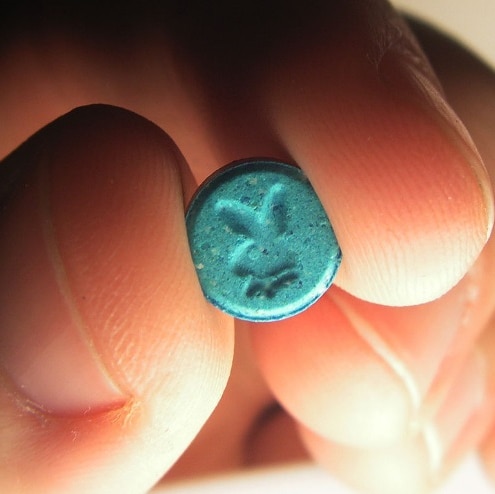MDMA, or 3,4-methylenedioxymethamphetamine, is a synthetic drug that acts as a stimulant and hallucinogen. At the molecular level, MDMA is structurally similar to both methamphetamine and mescaline, giving it unique properties that affect the brain in profound ways. When ingested, MDMA quickly enters the bloodstream and crosses the blood-brain barrier, enabling it to interact directly with neurons. The primary action of MDMA is on three key neurotransmitters: serotonin, dopamine, and norepinephrine. These chemicals are crucial for regulating mood, pleasure, and energy levels.
The most significant impact of MDMA is on the serotonin system. MDMA causes a massive release of serotonin from storage sites in neurons, leading to a surge in serotonin levels in the brain. This flood of serotonin contributes to the feelings of euphoria, emotional warmth, and enhanced sensory perception that users experience. Additionally, MDMA inhibits the reuptake of serotonin, prolonging its effects and intensifying the overall experience. Dopamine and norepinephrine also play roles, with dopamine contributing to the drug’s reinforcing properties and norepinephrine increasing heart rate and energy levels. smokeless gun powder for sale
Beyond these primary effects, MDMA interacts with other brain systems, including the oxytocin and vasopressin pathways. Oxytocin, often referred to as the “love hormone,” is associated with social bonding and trust. MDMA’s ability to increase oxytocin levels is thought to enhance feelings of empathy and connection with others. Vasopressin, similarly, is involved in social behaviors and hydration regulation. Together, these interactions create the complex and multifaceted experience that MDMA users report, a mix of physical, emotional, and perceptual changes that define the essence of ecstasy. Effects of MDMA Pills
MDMA’s journey from the laboratory to the dance floor is a fascinating tale of scientific curiosity and cultural evolution. Initially synthesized in 1912 by the German pharmaceutical company Merck, MDMA was not immediately recognized for its psychoactive properties. It wasn’t until the 1970s that MDMA began to garner attention in the psychiatric community, thanks to the work of chemist Alexander Shulgin. Shulgin explored MDMA’s potential therapeutic uses, noting its ability to enhance communication and emotional openness during psychotherapy sessions.

During the 1980s, MDMA gained popularity as a recreational drug, particularly within the burgeoning rave and club scenes. Users were drawn to its euphoric and empathogenic effects, which seemed to complement the communal and high-energy atmosphere of dance events. This period marked the transition of MDMA from a therapeutic tool to a widely used substance in social settings. The drug was often sold under the name “Ecstasy,” and its use became synonymous with the vibrant and sometimes hedonistic culture of electronic music festivals.
However, the increased recreational use of MDMA also led to growing concerns about its safety and potential for abuse. By the mid-1980s, MDMA was classified as a Schedule I substance in the United States, indicating a high potential for abuse and no accepted medical use. Despite this legal status, research into MDMA’s therapeutic potential continued, albeit under strict regulatory constraints. This dual identity—as both a party drug and a potential therapeutic agent—has shaped the discourse around MDMA, highlighting the need for balanced and informed perspectives on its use. Effects of MDMA Pills
The allure of MDMA lies in its profound and often transformative effects on the user. Upon ingestion, the onset of MDMA’s effects typically begins within 30 to 45 minutes, peaking at around 60 to 90 minutes. Users describe a wave of euphoria, characterized by intense feelings of happiness, emotional warmth, and a sense of well-being. This initial rush is often accompanied by heightened sensory perceptions, where lights seem brighter, colors more vivid, and music feels deeply immersive.
One of the most notable effects of MDMA is its ability to enhance social and emotional connections. Users often report feeling a deep sense of empathy and understanding towards others, making social interactions more meaningful and enjoyable. This empathogenic quality is particularly valued in social settings like raves and festivals, where the communal atmosphere is amplified by the drug’s effects. Conversations become more engaging, physical touch feels more intimate, and the overall sense of connection is profoundly enhanced. Effects of MDMA Pills
Beyond the emotional and social effects, MDMA also produces various physical sensations. Users may experience increased energy and stamina, making prolonged dancing or physical activity more enjoyable. Some report tactile sensations, such as tingling or chills, that add to the overall sensory experience. However, these pleasurable effects are often accompanied by less desirable side effects, such as jaw clenching, muscle tension, and increased body temperature. Understanding these diverse effects helps to appreciate the complex and multifaceted nature of the MDMA experience. etho pharma